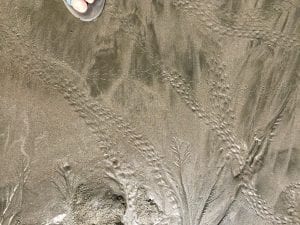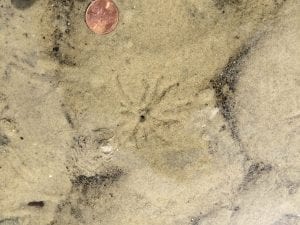Modern Metazoan-Sediment Interactions
In addition to studying the ancient record of animal-seafloor interactions, I work in modern sedimentary systems. The objective of this modern work is to provide an actualistic and more quantitative framework for the interpretation of the sedimentary record of biotic-environmental coevolution. I am studying modern bioturbated sediments (in both siliciclastic and carbonate depositional systems) in order to calibrate proxies for mixed layer depth and measure the impact of bioturbation upon sulfur, carbon, phosphorus and trace metal cycling. This work integrates textural (x-radiographic) characterization of sediments with paleoecology, sedimentary geochemistry and diagenetic modeling. Recent field work includes coring sediments in Long Island Sound, Connecticut; the Skidaway-Ogeechee estuary system, Georgia and the Exumas, the Bahamas.



![]() Cored sediments can be x-rayed, producing high-resolution images of sediment fabric from which the intensity of bioturbational disruption (and identify of bioturbators) can be determined. Ogeechee estuary system, GA.
Cored sediments can be x-rayed, producing high-resolution images of sediment fabric from which the intensity of bioturbational disruption (and identify of bioturbators) can be determined. Ogeechee estuary system, GA.